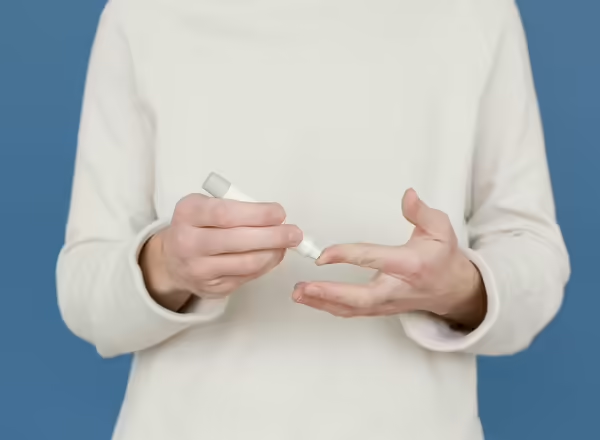
Insulin Sensitivity Factor and Insulin-to-Carbohydrate Ratios
How Insulin Works
Insulin is the hormone necessary to move glucose from the bloodstream into the cells. Insulin keeps blood glucose within a normal range. With diabetes, insulin is either not available or is not being used properly by the body.
- Insulin treatment through injections or an insulin pump is always necessary for people with type 1 diabetes because the body no longer produces insulin.
- With type 2 diabetes, the body does not use insulin properly. Insulin injections may be part of the treatment plan with type 2 diabetes, also.
The main goal of diabetes treatment is the regulation of blood glucose to achieve individualized blood glucose targets. There is no one nutritional approach to managing diabetes, nor is there one insulin or medication prescription that is appropriate for everyone with diabetes.

Evidence-based guidelines from the Academy of Nutrition and Dietetics recommends education on carbohydrate counting using insulin-to-carbohydrate ratios (ICRs) for persons taking multiple daily insulin injections or insulin pump therapy. Insulin-to-carbohydrate ratios estimate how many grams of carbohydrates are covered with 1 unit of short-acting or rapid-acting insulin. For normal-weight adults, a typical starting point for ICR is 1:10, meaning 1 unit of rapid-acting insulin is estimated to cover 10 grams of carbohydrate.
Carbohydrate intake records, insulin doses, and blood glucose record keeping before and two hours after eating a meal are all necessary to fine-tune your ICR. Your ICR may be different for breakfast than for lunch. It may also change at different stages of life. No two people have the same ICR.

Another tool that can help manage blood glucose for individuals taking multiple daily doses of insulin or using an insulin pump is an insulin sensitivity factor (ISF). The insulin sensitivity factor is also called a correction factor. This is used to calculate how much insulin you need to take to bring your glucose level down to a pre-determined target range. A sensitivity factor is either subtracted from or added to the pre-meal insulin dose. As with the ICR, the ISF is different for different people. Some people may need 1 unit of insulin to lower blood glucose by 50 mg/dl and someone else may need 1 unit of insulin to lower blood glucose by 25 mg/dl.
How sensitive you are to insulin and your body size affects your ISF. An ISF of 1:40 is typical for an average weight adult with type 1 diabetes. One unit of rapid-acting insulin is estimated to drop blood glucose by 40 mg/dl. A person with type 2 diabetes is generally less sensitive to insulin than someone with type 1 diabetes. Physical activity, illness and hormones can all affect your sensitivity to insulin. If you use an insulin pump or take multiple daily doses of insulin, work with your health-care team to determine your ICR and ISF for better blood glucose control.

Using ICRs can provide more flexibility in carbohydrate choices as you are dosing your insulin according to how much carbohydrate you actually eat at each meal. Depending on whether you use rapid-acting or regular (short-acting) insulin, your health care provider or registered dietitian-certified diabetes educator will use a formula to help you determine your ICR and ISF. These factors are an initial educated guess or starting point. Careful follow-up with your health-care provider is necessary to work through this process and assure your blood glucose levels remain within your target ranges.
Putting it All Together to Determine Proper Insulin Dose
- ICR: 1:10 (1 unit of rapid acting insulin for every 10 grams of carbohydrates)
- ISF: 1:40 (1 unit of rapid acting insulin will decrease blood glucose by 40 mg/dl)
- Pre-meal target blood glucose range: less than 70-100 mg/dl
- Pre-lunch blood glucose level: 220 mg/dl
Lunch:
- 1 small apple (15 grams carb)
- Turkey sandwich on whole-wheat bread with lettuce and tomato (30 grams carb)
- 6 ounces yogurt (15 grams carb)
Example: You eat 60 grams of carbohydrate for lunch and your pre-determined insulin-to-carb ratio is 1:10
To determine your lunchtime insulin dose need to cover 60 grams of carb, divide 60 by 1
60 grams of carbohydrate / 10(ICR) = 6
(6 units of insulin to cover 60 grams of carbohydrate)
Use your insulin sensitivity factor (ISF) to reach target blood glucose
Current pre-lunch glucose 220 mg/dl – Target glucose 100 mg/dl / ISF 40
120/40 = 3 units of additional insulin for ISF
3 units of insulin will bring your pre-lunch blood glucose of 220 mg/dl to target blood glucose of 100 mg/dl
Next, add in insulin dose to cover lunchtime carbs:
6 units of insulin to cover 60 grams of mealtime carbohydrates (1 unit insulin per 10 grams of carb)
+ 3 units of insulin (insulin sensitivity factor or correction dose) =
9 units total lunch time insulin dose is the amount estimated to cover lunch-time carbs plus 3 extra units of insulin to cover elevated mealtime glucose
The above calculations are offered only as an example. Ask for a referral to a registered dietitian or a certified diabetes educator for assistance with advanced carbohydrate counting. It takes time, careful food intake and blood glucose record keeping to determine your insulin sensitivity factor and insulin to carb ratio. These will likely change over time and may require a little trial and error to find what works best for you.